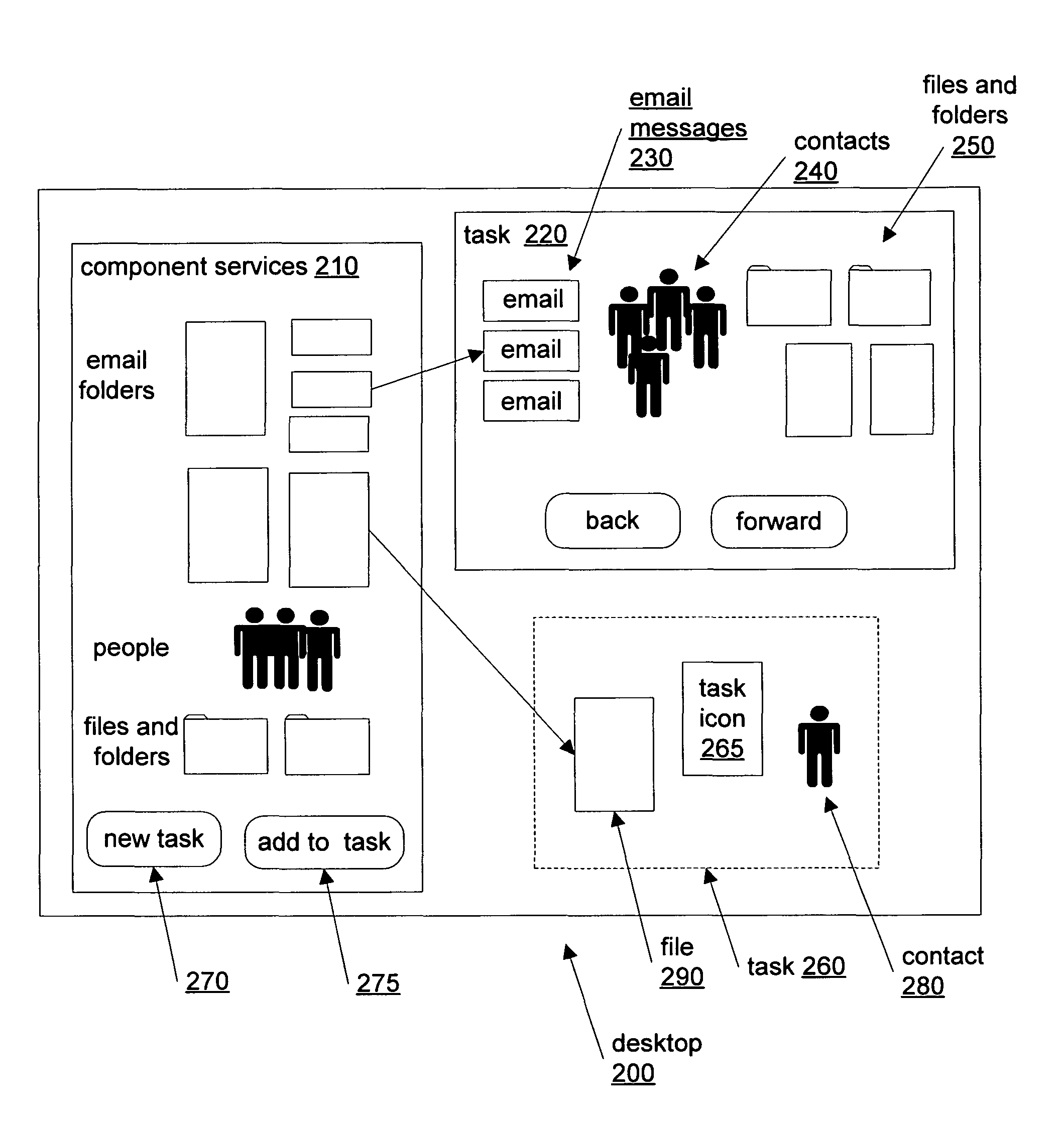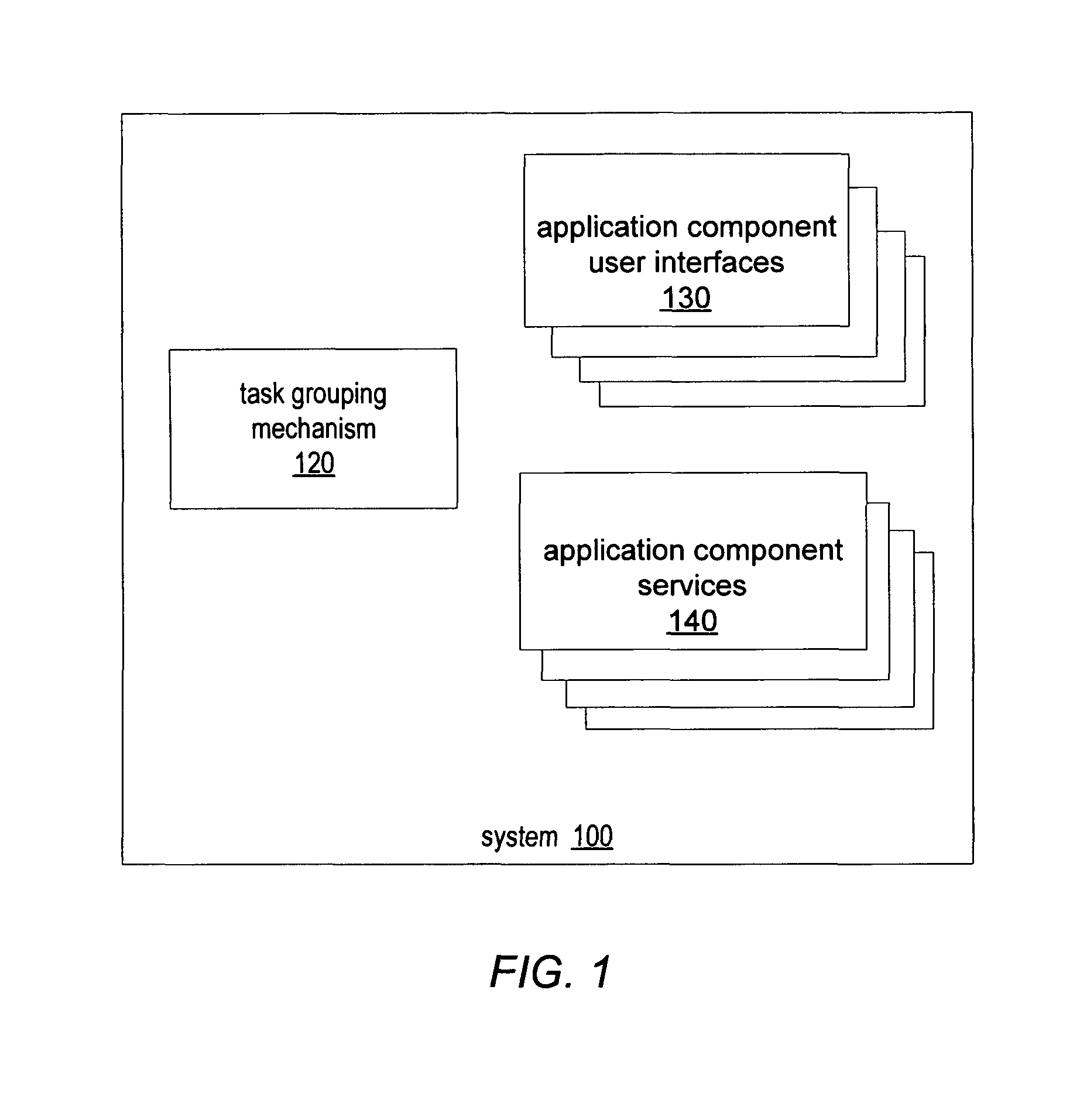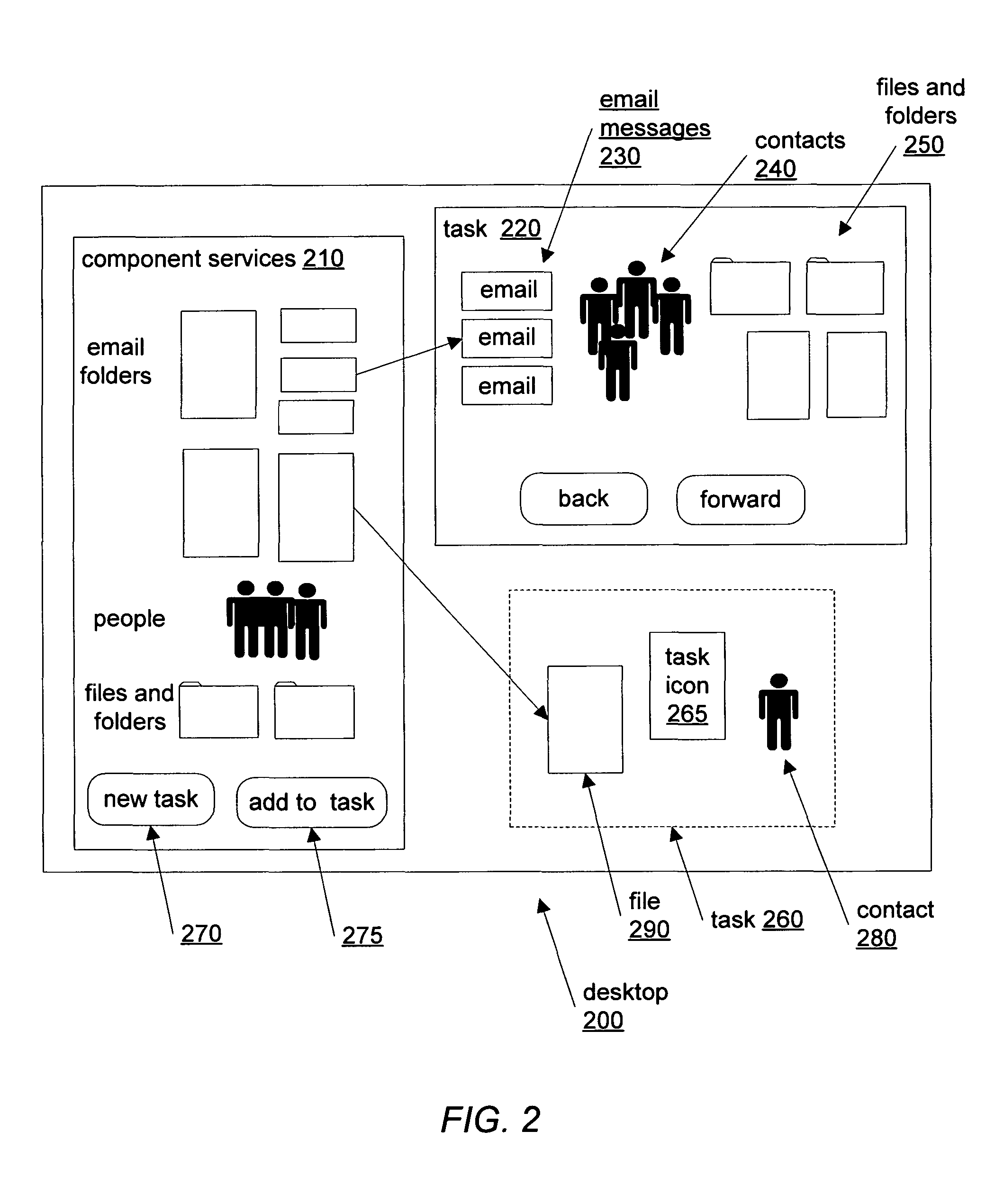Dynamic grouping of application components
a technology of application components and dynamic grouping, applied in the field of computer applications, can solve the problem of not being able to rearrange or group the individual features of the various applications into a single task-oriented user interface for users
- Summary
- Abstract
- Description
- Claims
- Application Information
AI Technical Summary
Benefits of technology
Problems solved by technology
Method used
Image
Examples
Embodiment Construction
Application boundary decomposition and dynamic grouping of application components may include a task grouping mechanism configured to provide user access to individual application components, such as user interfaces and corresponding processing code traditionally included only in separate applications. For example, FIG. 1 is a block diagram illustrating a task grouping mechanism120 allowing a user to interact with and access individual application component services and user interfaces, according to one embodiment.
System 100 in FIG. 1 may represent any of various types of computer systems include various computer architectures and may include any of various operating systems, such as Sun OS, MS windows, Unix, Linux, etc. Task grouping mechanism 120 may provide individual, independent, application components, such as application component services 140 and application component user interfaces 130, to a user via the operating system, rather then via individual applications. For exampl...
PUM
 Login to View More
Login to View More Abstract
Description
Claims
Application Information
 Login to View More
Login to View More - R&D
- Intellectual Property
- Life Sciences
- Materials
- Tech Scout
- Unparalleled Data Quality
- Higher Quality Content
- 60% Fewer Hallucinations
Browse by: Latest US Patents, China's latest patents, Technical Efficacy Thesaurus, Application Domain, Technology Topic, Popular Technical Reports.
© 2025 PatSnap. All rights reserved.Legal|Privacy policy|Modern Slavery Act Transparency Statement|Sitemap|About US| Contact US: help@patsnap.com



